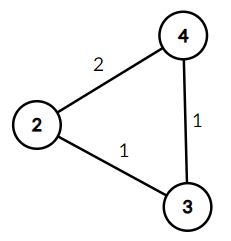Preparando MOJI
Josuke received a huge undirected weighted complete$$$^\dagger$$$ graph $$$G$$$ as a gift from his grandfather. The graph contains $$$10^{18}$$$ vertices. The peculiarity of the gift is that the weight of the edge between the different vertices $$$u$$$ and $$$v$$$ is equal to $$$\gcd(u, v)^\ddagger$$$. Josuke decided to experiment and make a new graph $$$G'$$$. To do this, he chooses two integers $$$l \le r$$$ and deletes all vertices except such vertices $$$v$$$ that $$$l \le v \le r$$$, and also deletes all the edges except between the remaining vertices.
Now Josuke is wondering how many different weights are there in $$$G'$$$. Since their count turned out to be huge, he asks for your help.
$$$^\dagger$$$ A complete graph is a simple undirected graph in which every pair of distinct vertices is adjacent.
$$$^\ddagger$$$ $$$\gcd(x, y)$$$ denotes the greatest common divisor (GCD) of the numbers $$$x$$$ and $$$y$$$.
The first line contains one integer $$$t$$$ ($$$1 \le t \le 100$$$) — the number of test cases.
The first line of each test case contains two numbers $$$l$$$, $$$r$$$ ($$$1 \le l \le r \le 10^{18}$$$, $$$l \le 10^9$$$).
For each test case print a single number — the number of different weights among the remaining edges.
72 416 242 61 103 32562 2568125 100090
2 6 3 5 0 5 50045
 The graph $$$G'$$$ for the first test case.
The graph $$$G'$$$ for the first test case. The picture above shows that the graph has $$$2$$$ different weights.
In the fifth test case, there is only one vertex from which no edges originate, so the answer is $$$0$$$.